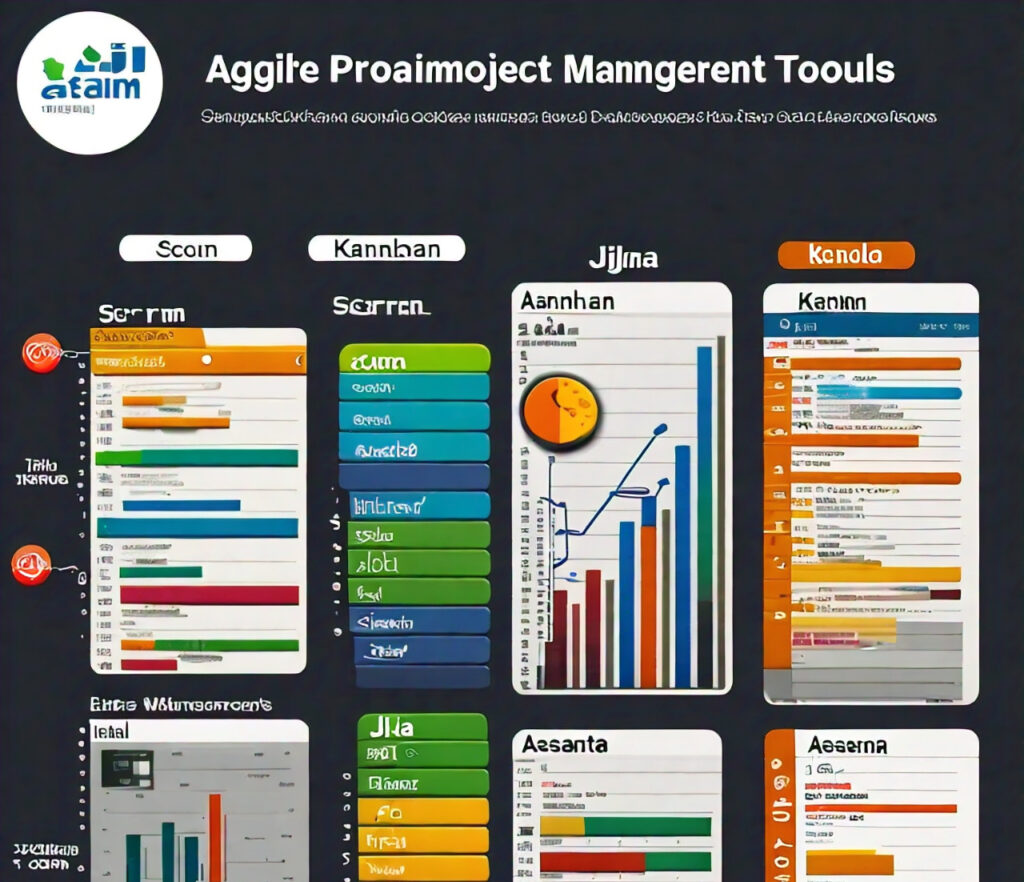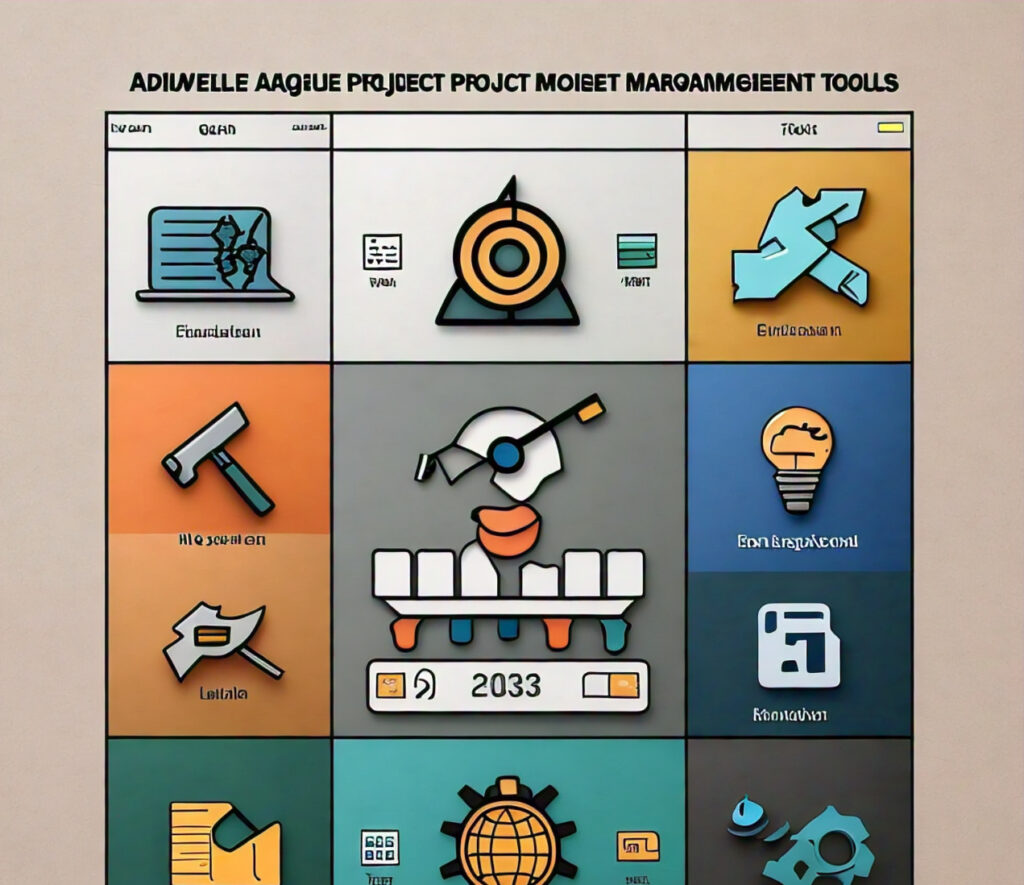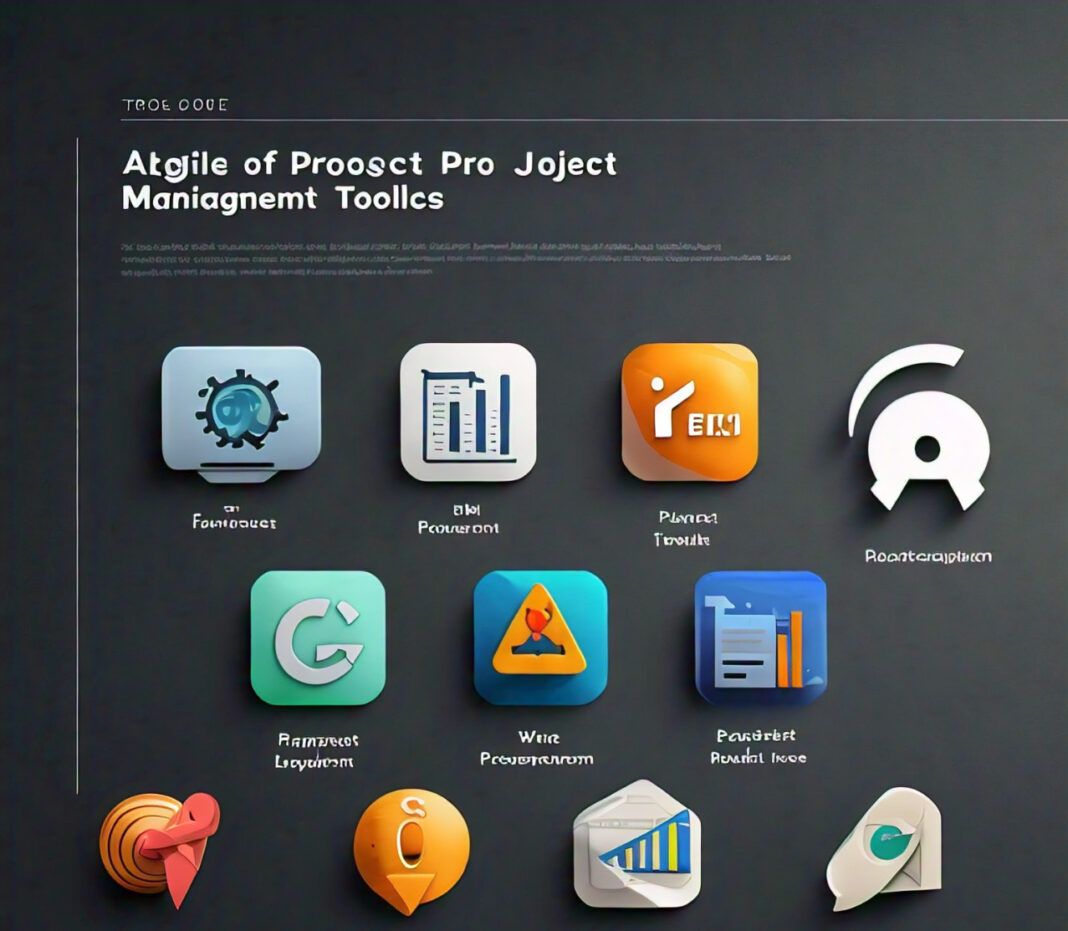Agile project management tools are a must for teams that are planning to work with Agile methodologies. These tools help in collaboration, smoothening of workflow, and making the project progress transparent. With so many choices at one’s fingertips, selecting the correct tool could make all the difference to the productivity and success of a team.

This guide compares popular Agile project management tools by evaluating their features, strengths, and possible weaknesses so that teams can make an informed choice.
Introduction to Agile Project Management Tools
1. The Role of Agile Project Management Tools
Agile Project management tools support software methodologies that include Scrum, Kanban, and
Lean concepts with features to enable collaboration, tracking the process, and setting up workflows. Key
functions include:
- Backlog Management: A list of tasks or features to work on, and their priorities
- Sprint Planning: Ability to set tasks into Sprints or Iterations and visualize their progress,
balanced output. - Task Tracking: Status and progress of particular tasks through their different stages.
- Collaboration: Keeping a group of people in touch through comments, notifications, and
shared documents. - Reporting: Reports and visualizations to show project progress, and know where the bottlenecks
are, and see how things work.
Popular Agile Project Management Tools
1. Jira
Overview:
Developed by Atlassian, Jira is one of the most popular Agile project management tools. It is known
for its flexibility and richness of features, covering each and everything in a different Agile
framework, say, Scrum and Kanban, for that matter.
Key Features
- Customizable Workflows: Jira enables the definition and customization of workflows in
alignment with the user-defined process. - Backlog Management: Rigid backlog management where teams can generate, prioritize, and
lastly, refine user stories and tasks. - Sprint Planning: It encompasses the tools for actual planning and management of sprints,
which include Sprint boards and Burndown charts. - Reporting and Analytics: It has built-in reports providing tools, which provide Velocity charts,
Cumulative flow diagrams, burnup charts, and other associated reports. - Integration: It integrates very well with many third-party tools and plugins, like Confluence,
Bitbucket, and Slack.
Strengths:
- Flexibility: Can be highly customized to meet the needs and different Agile methodologies
implemented by Teams. - Volume: Can be used by companies ranging from small start-ups to big companies.
- Rich Ecosystem: A huge market of plugins and integrations to enhance functionality.
Cons: - Complexity: Lots of features and options for each feature; a beginner might get
overwhelmed. - Price: It is relatively pricey for teams and big organizations.
2. Trello
**Overview: **
Trello, developed by Atlassian, also extends the touch of simplicity in its interface. Team members
are allowed to organize and track their work through Boards, Lists, and Cards.

Key Features
- Organization based on Boards – Users can create specific boards for various projects or
workflows. The possibility to break that work down into lists that could be associated with dif-
different stages of the workflow and the actual individual tasks are represented by cards. - Drag-and-Drop Interface – The app sports a very friendly and intuitive way to move around cards
and lists. - Card Customization: Add due dates, files, and checklists to cards.
- Power-Ups: Offers many power-ups to include more functionality; such as calendar views,
time tracking, and reporting.
Strengths:
- Easy to Use: Simple and user-friendly interface that is easy to learn and use.
- Visual Management: Presents the project tasks and the status of each one in a clear, visual way.
- Flexibility: Ideally fits most of the different kinds of projects and teams in size.
Weaknesses:
- No Advanced Functionality: Lacks some of the advanced functionalities and the reporting
tools, which more sophisticated PM tools have. - Not Scalable: Asana starts losing its effectiveness towards larger team sizes and projects
having complex requirements.
3. Asana
Background information:
Asana is a project management tool used to keep track of tasks and projects. The tool offers an
array of features that allow teams to manage work, and projects, and collaborate effectively.
Key Features:
Task Management: Create and assign team tasks fully and follow through to completion, including set deadlines.
Project Views: List, board, calendar, and timeline views are available from one project.
Milestones and Dependencies: The inbuilt support for milestones and task dependency allows for flawless coordination among tasks and project timelines for the team.
Reporting and Analytics: Use reports to get insights, such as project progress, tasks completed, and the creation of custom dashboards.
- Integration: Integrates with all tools, from Slack to Google Drive to Microsoft Teams.
Strengths:
- Versatile Views: It has multiple views on a project, which makes it flexible enough to suit
anyone’s needs or preferences. - Easy UI: The interface is friendly, intuitive, pretty simple, and with a focus on collaboration.
- Collaboration Features: Commentary, document attaching, and notification features for big
teams.
** Weaknesses:**
- Not Too Customizable: Stuff can’t be configured just the way some of the other tools are designed to be.
- Price: Advanced features would be available in the premium price plans.
4. Monday.com
About :
Monday. com is a highly visual and customizable work operating system in which one can easily track the work and its management through workflows, tasks, and projects in one central place. It
supports the implementation of Agile practices through the application of flexible boards and automation features.
Key Features:
- Boards: One can create and design their boards and replace them in different workflows. The
columns in a board depict a stage and status on the workflows. - Automation: Automation for repetitive tasks, including but not limited to notifications, status updates, and task assignments.
- Project Tracking: Track project timelines, progress, and dependencies.
-**Reporting and Dashboards: ** Access to fully customizable dashboards with rich reporting features that allow data visualization and project performance measurement.
- ** Integration with other Tools: **Slack, Google Workspace, Trello many more.
** Strengths **
Highly customizable: Flexible boards and workflows to manage any project.
- Automation: Powerful automation that is designed to shrink manual task effort and time by
enhancing efficiency. - User-friendly interface: Intuitive and aesthetically pleasing interface.
Cons:
- Complexity: Sometimes it’s very complex to set up and configure for beginners.
- Cost: For advanced organizational needs and large teams, it can be rather expensive.
5. ClickUp
Overview:
ClickUp is a versatile project management tool that links time tracking and document collaboration with task management all in one. It has everything you need to run your projects—Agile, Waterfall, or other project management methodologies.
Key Features:
- Task Management: The user can create projects with an unlimited number of tasks, assign
team members, and set priorities and measure progress. - Views and Customization: Among the many, list view, board view, calendar view, and the Gantt
chart view are available. Customizable workflows and statuses. - Time tracking is an intrinsic part of the system.
- Docs and Collaboration: In-built documentation and collaboration.
- Integration: It has plenty of integrations with tools such as Slack, Google Drive, and Zoom.
- Comprehensive Features: The ability to manage tasks, time tracking, features, along document collaboration – all under one platform.
- Customization: Greatly customizable in views and workflow options.
- Affordability: Competitive pricing with many features packed even in lower plans.
Drawbacks:
- Steep Learning Curve: A broad set of features may make learning the platform a bit steeper
then it could be for new users. - Performance: Some users indicate performance and data slowdowns with large amounts of
data.
Agile Project Management Tools Compared
1. Ease of Use
- Jira: Not user-friendly, but indeed more powerful and feature-rich as compared to the other tools
- Trello: Famous for ease of use and simplicity; it is the best choice for all those teams in which a visual approach is of paramount importance
- Asana: User-friendly; it focuses on the tracking of tasks and projects; only a couple of views can be selected according to user preferences.
- Monday.com: Visually appealing and easy to use, though it can be a bit difficult to set up or configure.
- ClickUp: The most feature-packed, though at times, that can make it a bit messy and hard to get your head around.
- Asana: Offers some customization in views and task management but has fewer choices than Jira.
- Mondaycom: The boards and workflows are highly customizable, with a good level of automation.
- ClickUp: Many options for customization are at the views, workflows, and task management end.
3. Reporting and Analytics
- Jira: Strong reporting tools, including Velocity Charts, Burndown Charts, and Cumulative Flow Diagrams.
- Trello: Basic feature and functionality, it takes from Power-Ups Basicness in Built-in Power-Ups.
- Asana: The project provides tracking of progress and custom dashboards, not forgetting some features of reporting.
- Monday.com: Users can build custom dashboards plus tools reporting that enable them to visualize the data of the project.
- ClickUp: Offers time-tracking features, customizable reporting, analytics, and customizable dashboards.
4. Integration
- Jira: Several integrations with third-party tools and plugins.
- Trello: It can integrate with other tools through the help of Power-Ups. However, the integration may be limited to some extent.
- Asana: Integrations with all major third-party tools like Slack, Google Drive, and Microsoft Teams.
- Monday.com: Integrations with third-party applications such as Slack, Google Workspace, and Trello.
- ClickUp: Able to integrate with literally tons of third-party tools like Slack, Google Drive, and Zoom.
- Jira: Its pricing may ultimately become more expensive, especially for large teams and organizations with needs that go beyond its standard features.
- Trello: The free version is basic, and from there, you can upgrade to premium plans with additional features.
- Asana: A few capabilities in the free version are restricted. For higher needs, premium and business plans are there.
- Monday.com: It can be expensive, as it has different plans for the various functionalities and team sizes.
- ClickUp: Gives moderate pricing with most of the characteristics in its low-level organized plans.
Which Agile project management tool to choose depends largely on the team size, the project’s complexity, the desired functionality, and budget considerations. Each tool has its unique merits and demerits, so it is necessary to evaluate all options available according to needs and preferences.
- Jira is perfect for a team longing for a high level of customization and strong reporting, but it
can be a little complex for newly onboarded users. - Best for teams that need an easy, visual way to manage their projects, but advanced functions are
limited: Trello. - Teams that need more flexibility in views and good collaboration features in a very user-friendly
interface: Asana. - Very customizable, and attractive looking with strong automation capabilities, but it is also complex in
setup: Monday.com.
ClickUp combines task management, time tracking, and document collaboration, all in a single unit
filled with features and boastful added value.
Consideration of the strengths and drawbacks of each tool will help teams select the one that fits best
with their needs in Agile practices, the project, and overall goals.






